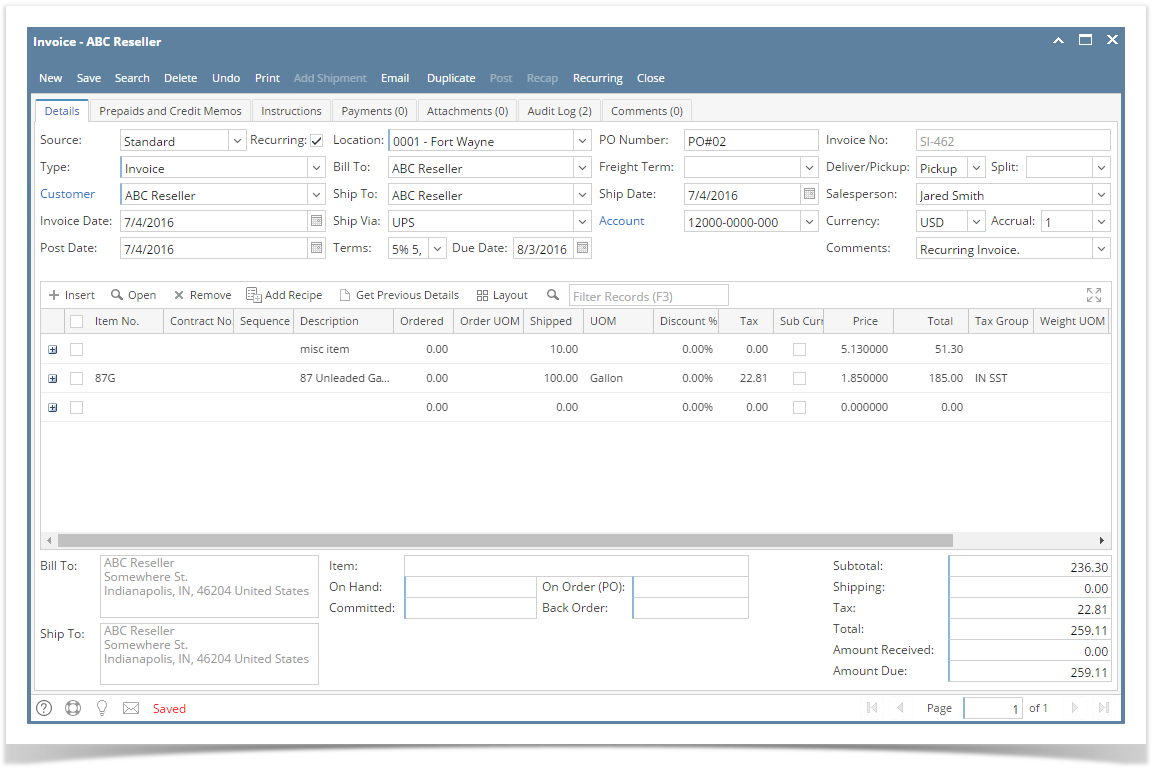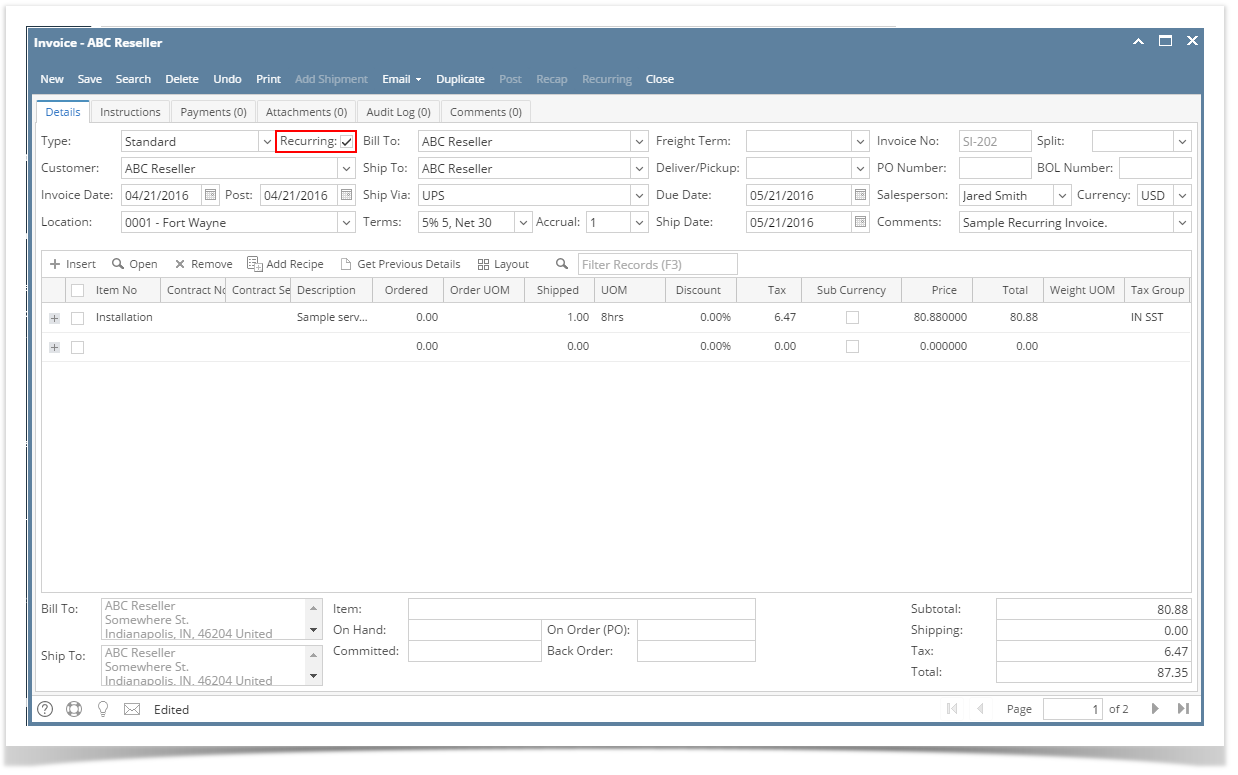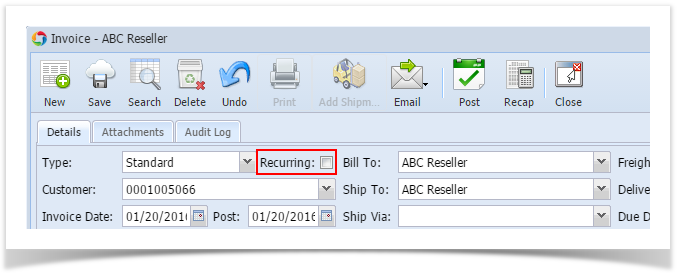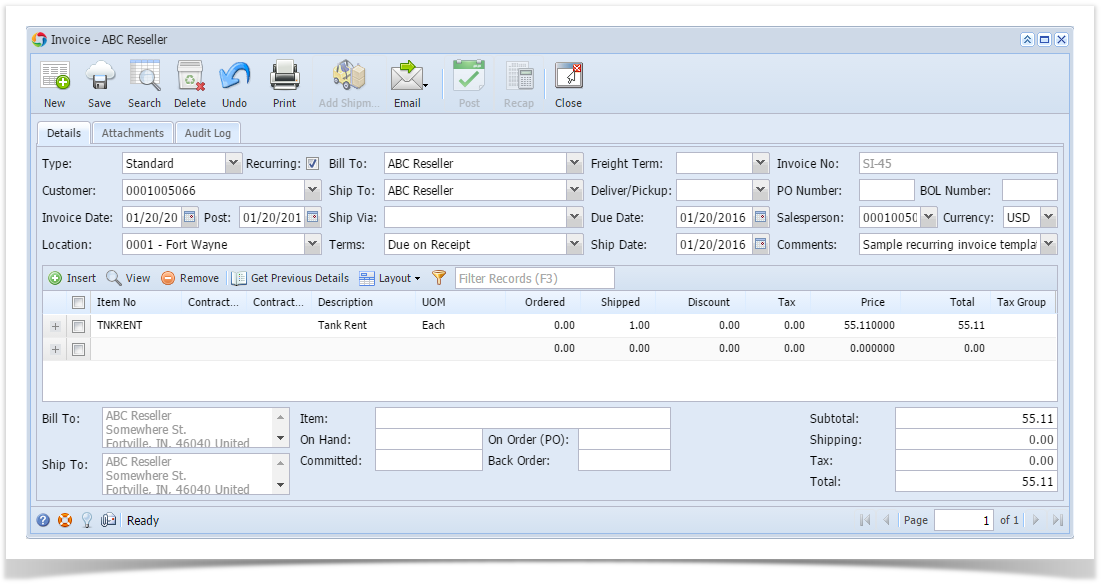The Recurring Template allow you to add and save common transactions for later use. For example, you may want to repeat an Invoice transaction previously used for a customer several times. Creating a recurring invoice will save time on repetitive data entry tasks.
- Open the Invoice record you want to convert to recurring template. If the record is not yet created, refer to How to Create Standard Invoice.
- Check the Recurring check box button.
- Save the invoice record.
- Click the Recurring button. This will open the Recurring Transactions screen filtered by the invoice's record number.
- Modify the details of the Sales Order on the Recurring Transactions, if necessary.
- Save and close the Recurring Transactions screen.
Related Topics
Overview
Content Tools








